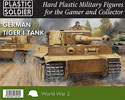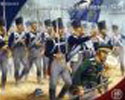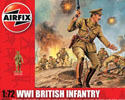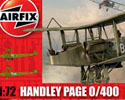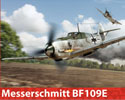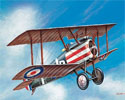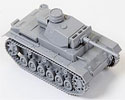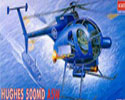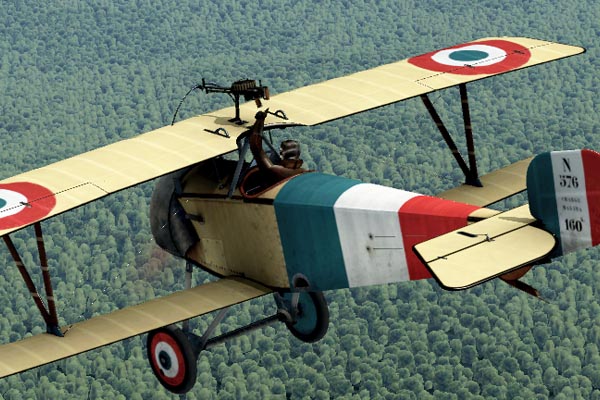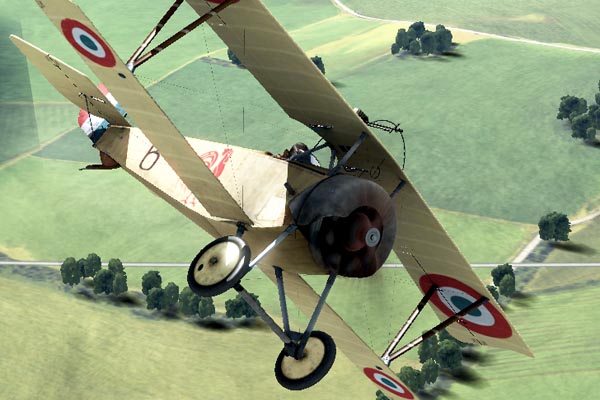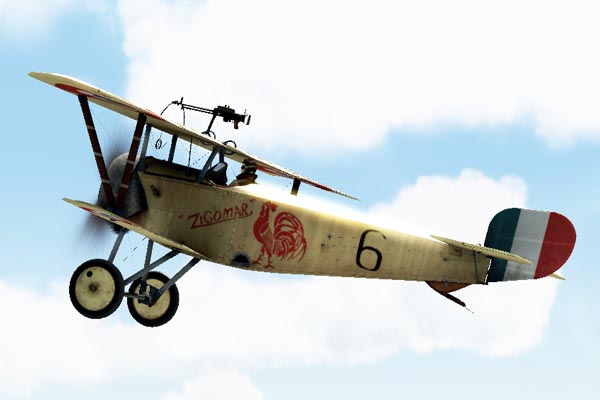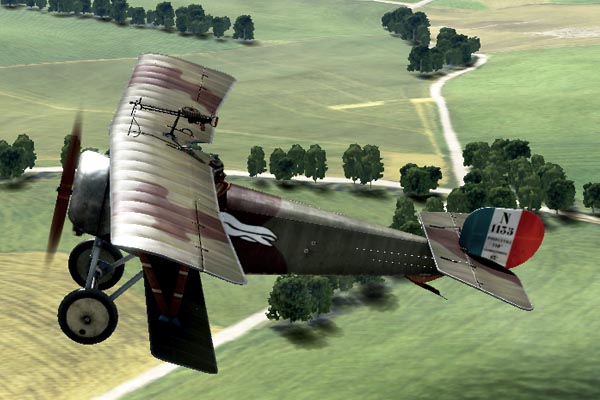The First World War - Nieuport 11
Nieuport 11 C1
The Nieuport 11 was introduced in 1916 and was one of the aircraft that ended the period known as the 'Fokker Scourge'. The Fokker Eindecker had made a huge mark on the air war due to it synchronization mechanism that allowed the machine gun to fire forward. The allies did not possess such a mechanism and the solution on the Nieuport was to mount a Lewis gun on the top wing firing over the propeller.
The Nieuport 11 addressed the problem of firing forward by mounting a Lewis gun on the top wing, firing over the propeller.
The Nieuport 11 was a very light weight biplane designed by Gustave Delage. It was a sesquiplane, which meant that the lower wing was smaller than the top one, the wings being connected by 'V' type struts, features later copied by the Albatros II and V. This layout gave the pilot a great field of view, especially downwards, however, it caused the lower wing to bend and twist under certain aerodynamic loads, and care had to be taken when maneuvering. It was a very responsive aircraft, using ailerons to control roll rather than warping the wings, and it outperformed its rival, the Fokker Eindecker, in every respect.
The first aircraft were introduced into front line service in January 1916 in time to play a vital role in establishing air superiority during the Battle of Verdun and the Somme Offensive.
The Nieuport 11 saw action until around March 1916, when it began to be replaced in front line service by the larger Nieuport 17. Even then the type still saw service on secondary fronts and was used as a trainer.
| Crew: | |
| Length: | |
| Height: | |
| Wingspan: | |
| Empty Weight: | |
| Loaded Weight: | |
| Powerplant: | |
| Max Speed: | |
| Range: | |
| Service Ceiling: | |
| Armament: |

